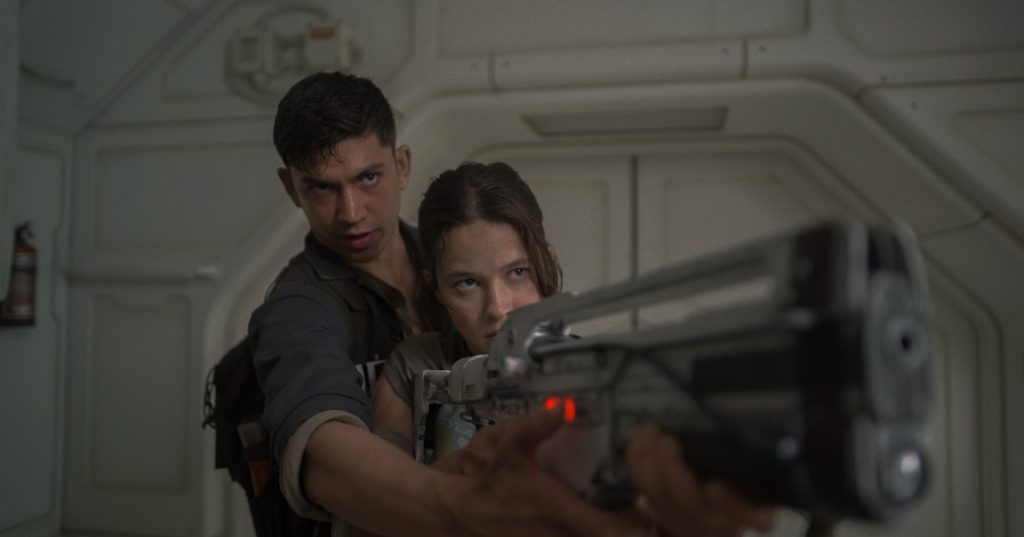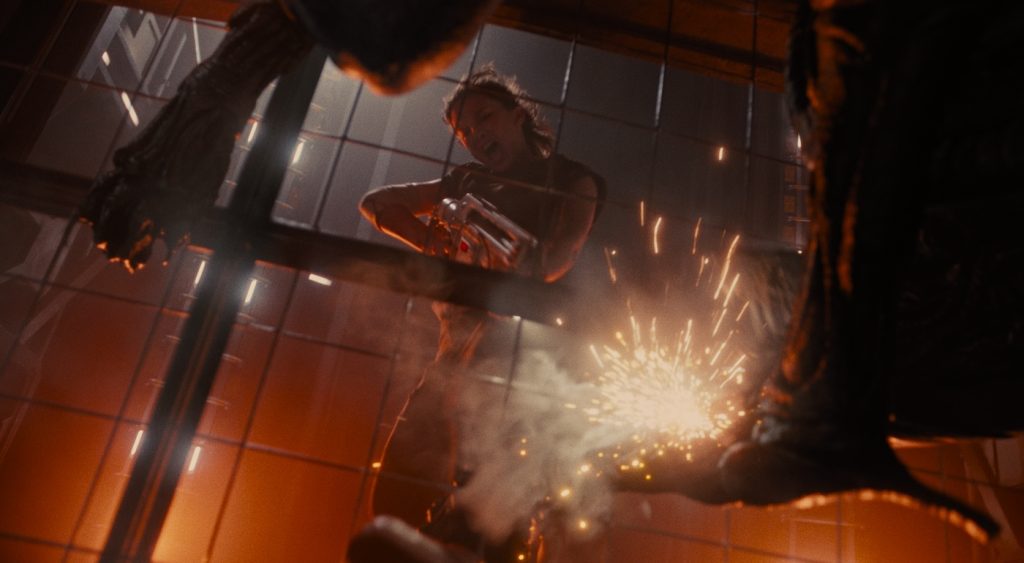“Alien: Romulus” Images Reveal Last Look at the Legendary Xenomorph, Cinema’s Gnarliest Monster
The wait is over—director Fede Alvarez’s Alien: Romulus is here, and with its arrival comes the return of one of the most iconic movie monsters of all time.
While the film stars Cailee Spaeny (coming in for rave reviews), alongside a cast of young stars like Isabela Merced, Spike Fearn, David Jonsson, Archie Renaux, and Aileen Wu, Alien: Romulus brings back the xenomorph, which for our money might be the most viscerally terrifying creature from any sci-fi film, ever. Swiss artist H.R. Giger designed the dripping, double-jawed, exquisitely gnarly monster, and in the decades since, it has been expanded into a sci-fi species unparalleled in savagery and grotesque beauty in the cinema or on TV. One of the things that has made the xenomorph so consistently compelling is there is absolutely no reasoning or pleading with the creature; unlike other alien races in popular sci-fi films and series, the xenomorphs aren’t sapient toolmakers, they boast no technological civilization, no human-like behaviors or traits (save for the survival instinct) to work with. They are primal, almost primordial predators who exist to propagate their species at all costs. That means protecting their single, fertile queen with a breed caste of warriors and other specialized types, which include the “face-huggers” you’ll see again in Romulus who attach themselves to their host’s body and implant their endoparasitoid larvae inside. Unpleasant, yes, but also unforgettable.
Alvarez’s film is the rare interquel, existing on the Alien timeline between Ridley Scott’s 1979 stunner Alien and James Cameron’s thrilling 1986 sequel Aliens. Those two films boasted a career-defining performance by the great Sigourney Weaver as Ellen Ripley, the resourceful, gritty heroine who was able to go face-to-multiple-faces with xenomorphs aboard the USS Nostromo (Alien) and the Sulaco (Aliens) and live to tell the tale.
For Romulus, Alvarez got the idea for his story from a deleted scene from Aliens that showed children running among the workers in the space colony. “I remember thinking about what it would be like for teenagers to grow up in a colony so small and what would happen to them when they reached their early 20s,” Alvarez said in the press notes. So Romulus tracks those grown teenagers, led by Spaeny’s Rain, who is desperate to get off the mining colony of Jackson’s Star and ends up joining a crew of space colonizers who go to scavenge a decommissioned space station to find the technology they need to leave their doomed planet behind. Unfortunately for Rain and the rest of the crew, the decommissioned space station is not abandoned—but the life aboard isn’t the welcoming sort.
In a last look at the xenomorph before the film’s wide release, all those beautiful, horrifying details first captured in Alien are fully displayed. The first iteration of the creature was in Giger’s lithograph, Necronom IV. For Alien, Italian special effects designer Carlo Rambaldi designed the xenomorph’s head with exacting detail, and in the following sequels, Cameron and filmmakers like David Fincher (Alien 3) and Alvarez have been bringing the endoparasitoid extraterrestrial species back again and again, with some occasional tweaks and augmentations.
While the cast of Romulus has been praised, specifically Spaeny, for grounding the film in human concerns, the xenomorph always reigns supreme in any addition to the franchise that it’s featured in. Here are some last looks at the most legendary alien creature of them all:





And here’s a peek at our crew members:








Alien: Romulus opens wide on August 16.
For more on Alien: Romulus, check out these stories:
First “Alien: Romulus” Reactions Call it a Genuinely Terrifying Sci-Fi Horror Experience
Everything You Need to Know About “Alien” & “Aliens” Before You See “Alien: Romulus”
Featured image: Xenomorph in 20th Century Studios’ ALIEN: ROMULUS. Photo courtesy of 20th Century Studios. © 2024 20th Century Studios. All Rights Reserved.



